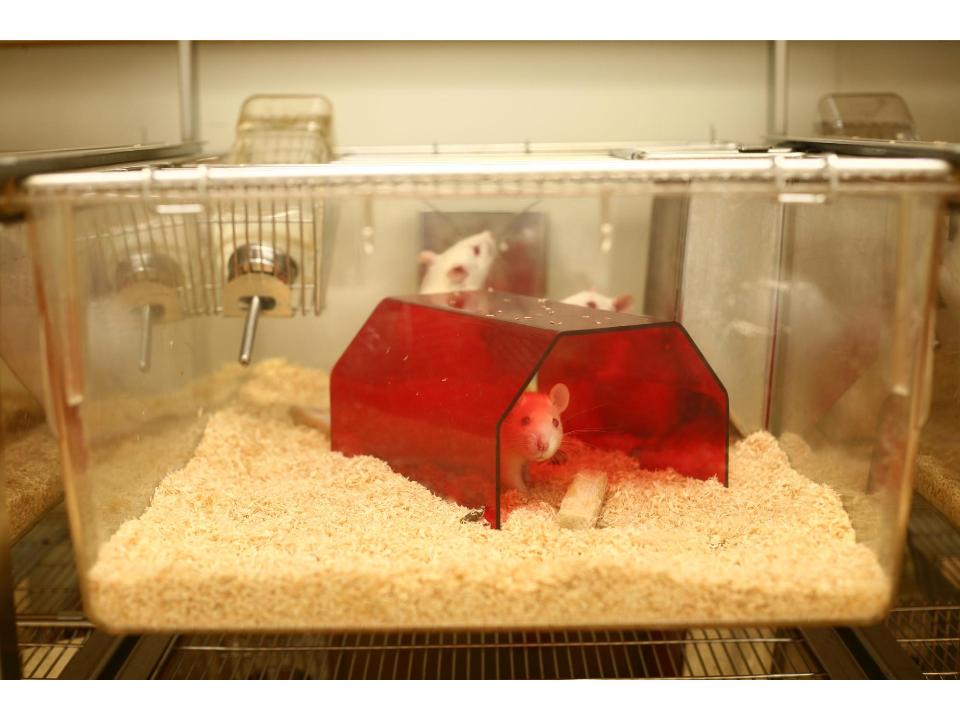Health to die for

Since the 17th century, dogs and rats have been tested on in the industry and the medical field. Picture attribution to Understanding Animal Research on Flickr.
by Vivian Chang, staff reporter

Cute, furry, friendly, loving animals that are meant to be companions or “a man’s best friend.” These same animals are being tested on in the cosmetic industry and the medical field.
“I don’t support it,” ninth grader Leah Leem said.
Animals such as dogs and rats have been tested on since the 17th century in the United Kingdom and started to spread in the 19th century.
Dr. Paul Locke, who is an environmental health scientist at John Hopkins University located in Baltimore says, “animal testing is valuable and important in several important ways.”
Animal testing benefits both humans and animals themselves, but is it really ethical?
Animal protection laws
The only law in the United States that manages animal treatment is the Animal Welfare Act (AWA). The AWA protects all and any laboratory animals. It states that anyone who will work with animals has to be trained and that the animals should not be in pain at any time during the experiment(s).
Section 2134 of this law states that “No dealer or exhibitor shall sell or offer to sell or transport or offer for transportation, in commerce, to any research facility…unless and until such dealer or exhibitor shall have obtained a license from the Secretary and such license shall not have been suspended or revoked.”
Section 2143 lists all of the humane ways to handle, care, treat, and transport animals. “…no animal is used in more than one major operative experiment from which it is allowed to recover”
Section 2158 states the how the animals are protected. It specifically talks about how long an animal could and should be held for, general rules, the requirements of the certification, and much more.
“You just can’t torture animals. You’re not going to get good results, you’re not going to get your results published in a journal, and no federal government or state government or private foundation is going to fund your research,” Dr. Locke said.
Any department, agency, or company that uses animals in their laboratories have to comply with all of the standards listed on the AWA as well as some other requirements.
Animal pain
According to Dr. Paul Locke, the Animal Welfare Act states that all professionals who will work with animals have to be trained and that the professionals should use anesthetics and analgesics if they are operating on them, so that the animals will not be in pain.
“Without testing newly developed medications on lab mice or rats, scientists wouldn’t know if a certain drug is category A, B, C, D or X which can be detrimental to the human society. For example, Tenormin, generic name known as Atenolol is an ACE inhibitor used for people who have high blood pressure. Without testing the drug on animals such as mice, scientists would never know how effective this drug is,” pharmacist Francesca Chang said.
Alternatives to animal testing
Since there is nothing else that can imitate the human body, there are currently no alternatives to animal testing. Dr. Locke says that “there are ways to use non-animal models…we are not in a point now where we can completely replace animals in biomedical research,”.
Organs-on-a-chip is a formation of a non-living creature in a cell dish that can work like a human lung, for example. Organs-on-a-chip is faster and cheaper but more studies do need to be done in order for these alternatives to be effective.
“We can also use older data and figure out what chemicals react with each other based on the older data.” Dr. Locke said.
Benefits of Animal Testing
The National Institutes of Health conducts experiments on animals to reduce the chances of illness in humans which will in turn result in a lengthen life span. According to this Americans for Medical Progress (AMP) brochure “animal research is necessary for medical progress”.
Researchers are advancing in the medical field due to animal testing. They continue to develop new and better medicines for diseases such as Human Immunodeficiency Virus (HIV) and Acquired Immune Deficiency Syndrome (AIDS).
Animal testing is reducing death rates from heart disease by the millions. For a list of diseases that animal testing benefits click here.
“The public has no understanding about why basic research is necessary to treat and cure diseases. And the reason for that is that the animal rights folks have convinced the public that basic research is has no purpose, that it is done to serve researchers’ idle curiosity,” chair of Americans for Medical Progress Dr. Cindy Buckmaster said.
Luckily the amount of companies that do not test on animals in the cosmetic industry is increasing. Companies like Anastasia Beverly Hills, Hourglass, Kat Von D, Lorac, Mario Badescu, Milani, Sonia Kashuk and much more are PETA or Leaping Bunny certified. To see the full list click here. To see whether or not a company is Leaping Bunny certified click here.
“Animal-based research does not only save lives, it improves the quality of lives. We have medications for pain and allergies, for example, that allow us to live more comfortably… biomedical research with animals made all of it possible.” Dr. Buckmaster said.
